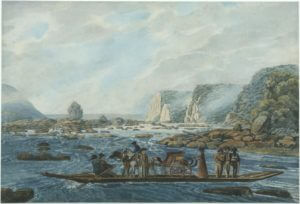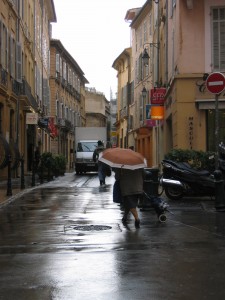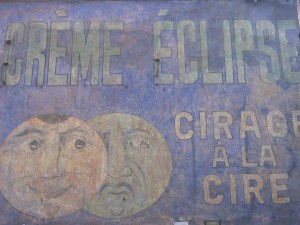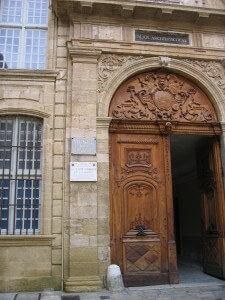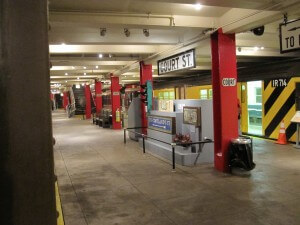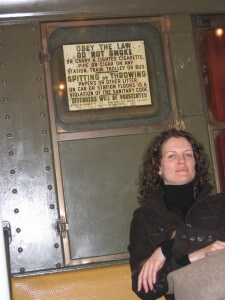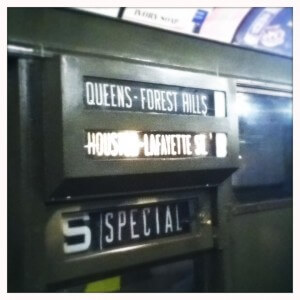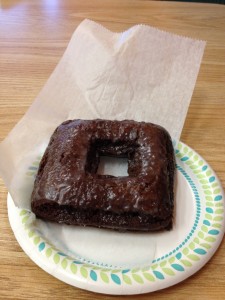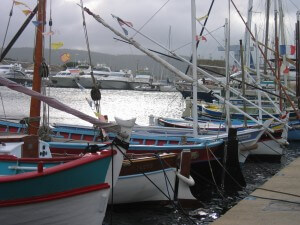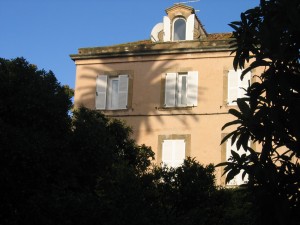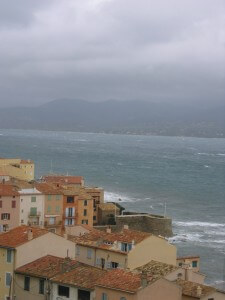I was compiling a list of objects with a Maryland theme from the Metropolitan Museum of Art’s collection for the fun of it. My mother’s family has been rooted along the lower Susquehanna and Chesapeake Bay for nearly 400 years. It was fun to find this early nineteenth century watercolor of crossing the Susquehanna at Wright’s Ferry, described as being near Havre de Grace. Nearly fifty miles away, I would hardly describe Havre de Grace as being near present day Columbia, Pennsylvania, once known as Wright’s Ferry. It helps to think in context. During the 1811-1813 period that the artist, Pavel Petrovich Svinin, traveled through the mid-Atlantic, Havre de Grace was possibly the largest town and was accessible just down river – the river was the road of the time. Svinin was the Secretary to the Russian Consul-General and was based at Philadelphia. Many of his watercolors survive in the Metropolitan’s collections, and include scenes of many events of protestant religions present in the mid-Atlantic, water scenes, and cities. In looking at this watercolor, I particularly enjoy the lady and her chaise, and that she seems to be surrounded by others of different classes. The ferry at Wright’s Ferry was first an animal powered ferry, but due to traffic, flat boats, canoes, and other conveyances were used to ease long waits to cross the river.
After my work trip to St. Tropez in 2008 (see last week’s post) I also stopped for a couple of days in Aix for another job. Here are a few travel notes. I was in Aix at the time of the last presidential election – jet lag ensured that I saw the acceptance speech from my hotel room.
11/3/2008 – Aix is gorgeous between its bursts of rain and sun. The buildings are incredible and oh how I crave not to be the only one in this town. I ate quenelles ate a café on the Cours Mirabeau, incredible street, but feels touristy. Maybe it isn’t. I worked with more men today, no women in sight. We stumbled along in bad French (me) and heavily accented English (one of the men, we weren’t quite equal in our French and English but not too bad). We did okay, and I walked out again into the stone streets.
Internet in a café thick with French BO and with keyboards I couldn’t swing. I wandered until I summoned the courage to enter a restaurant, and I picked the right one, though I regret being such a piggy now. I was the first customer seated at Le Passage tonight. La Femme Seule. I ordered a fixed menu, it was delicious. Some warmed buttery piece of cheese with crumb and cherry tomatoes, duck with tomatoes and olives, a dessert thick with coconut and pineapple with a pineapple confit. Think it was my first time in a restaurant with a Michelin star.
Hotel Le Mozart is another funny Provence place, but better than last night. I’m by the elevator, but it is already more quiet than St. Tropez. Rain continues to spit out of the sky, and I pray that the skeeters have already succumbed to the cold.
11/4/2008 – Started the morning at Jacob, a hippish pastry shop, where I watched the endless parade of Francais buying baguettes, ficelles, and restaurants (those are loaves of bread). I ate a brioche with raisins, citron, and cream and had a café. All for less than 4 E., ½ the price of the basket of bread at the hotel.
The afternoon was mine to stroll the streets. I entered some churches, Saint Esprit, with Saint Madeleine’s Annunciation hanging out while they renovate that church. Then up to Saint Saveur, what a church, with it’s roman baptismal area, incredible North African ornamentation over the altar. I was quizzically discerning a tapestry hanging in the dark, as usual, with no label. Either the Virgin or this Madeleine character. Then all the lights in the church flared and I wondered if God was scheduled to appear. I saw a parade of flowers entering the church, a Tuesday afternoon. I emerged from the church to see a young woman in tears, held up by her friends. The hearses here are so compact, with the flowers packed on top of the coffin.
Poked my head in at the Atelier Cezanne. It was 5.50 E and about 15 minutes worth of perusal. I didn’t feel like staying, though I bet the gardens are lovely in the summer. Internet, Vietnamese takeout, and hotel in the evening, as rain dumped down.
Transit and Museums? Two of my loves rolled up into one.
Visitors to New York want to see the Empire State Building, Times Square, and the Statue of Liberty. I try to coax them off the beaten path.
The New York Transit Museum is as much a social history museum as it is one of technology. The creation of public transportation was a catylyst for growth – without it, the city jams up. It also gave people the opportunity to spread out a bit: much of the upper reaches of Manhattan, Queens, and outer reaches of Brooklyn experience unprecedented building booms after the subway was built. It allowed people to work in one place, and come home somewhere a little less congested.
The Transit Museum is housed in a decommissioned, stub-end subway station in Brooklyn, near the Borough Hall station. On the Mezzanine floor are exhibits about the construction of the station, as well as a changing exhibition space. There’s also a giddy chronology of turnstiles laid out on the floor. Below, the platform level stores a history of public transit technology, from cars that ran on the elevated railways to specially painted cars for the World’s Fair. The Transit Museum hosts tours to Coney Island and other destinations using their old equipment. See my post on the December Vintage Subway Ride.
Check out The New York Transit Museum site for more information. And if you enjoy subway porn, check out nycsubway.org. Beautiful, incredible repository of many photographers’ efforts to capture the history of the subway on film. The 1980s images of grafitti covered trains and deteriorating stations are really poignant. Click, click, click.
Spinach? It’s our not-quite-precise pronunciation of the SPNHC acronym for the Society for the Preservation of Natural History Collections. Visit their website here.
 I have never worked for a natural history museum, but the challenges in preserving science collections for study leads to SPNHC’s natural interest in preventive conservation and collection care. The importance of preventive conservation is that by taking actions to mitigate the various agents of deterioration, we prevent damage that traditional conservation treatment could never hope to restore.
I have never worked for a natural history museum, but the challenges in preserving science collections for study leads to SPNHC’s natural interest in preventive conservation and collection care. The importance of preventive conservation is that by taking actions to mitigate the various agents of deterioration, we prevent damage that traditional conservation treatment could never hope to restore.
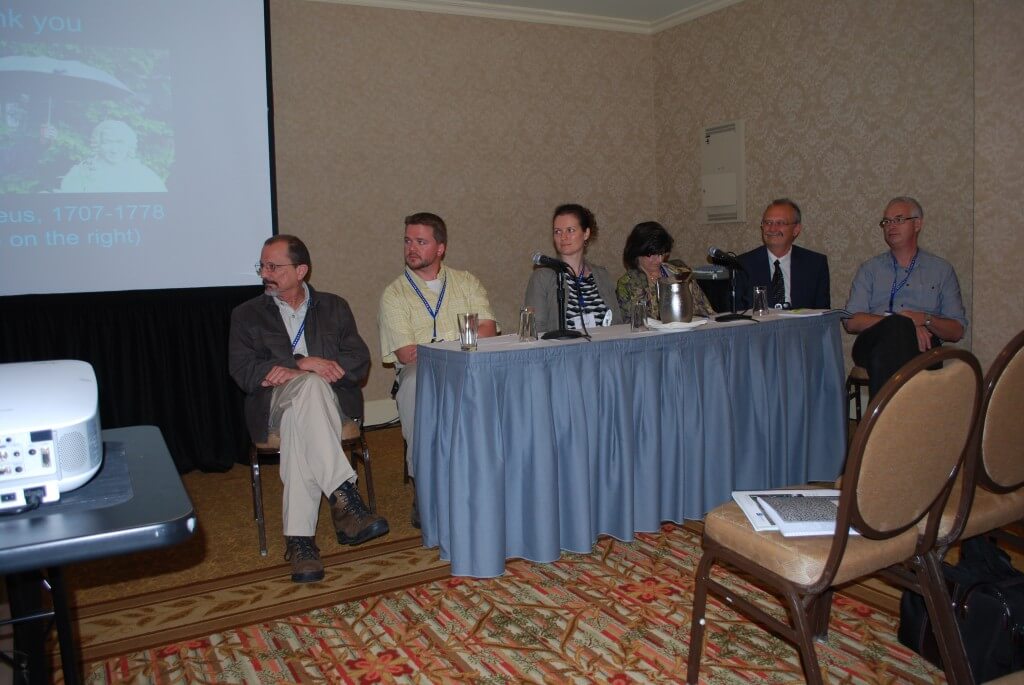
On a panel at the Preventive Care session at the SPNHC conference at New Haven. Photo: RP Arenstein.
I work with art and history collections, so I’m not too up on cryo collections and ornithology. But preventive conservation is a message we can all get behind, and the Preventive Care session on Thursday was fantastic. Speakers during this day-long session discussed current efforts around collections risk assessment, getting HVAC systems to work for you and save energy through selective shut-off, and consideration of gallery design to instill proper behaviors in your visiting public and thereby increase preservation.
I gave a talk (co-authored by Rachael Arenstein of AM Art Conservation, and Molly Gleeson) on preventive conservation resources.
Keep an eye on SPNHC, even if you don’t work in science museums. Collaborations in unexpected ways leads to innovation, especially in collection care.
Here are some links to some of the resources I mentioned in my talk:
eclimatenotebook – web-based climate monitoring software from the Image Permanence Institute
MuseumPests.net – Information for your Integrated Pest Management Program, from prevention to handling an infestation
Benchmarks in Collection Care – An evaluation for your collection care policies and practices.
Heritage Preservation (Heritage Health Index, Capitalize on Collections, Connecting to Collections, Alliance for Response) – Incredible resources for fundraising for collection care and emergency response – and much more.
National Park Service Conserve-o-Grams – short articles on a staggering array of museum practice topics.
Cultural Property Risk Analysis Model (Protect Heritage) – Collections risk assessment methodology, support, and resources.
 I’m reading Tomatoland, the 2011 book by Barry Estabrook. It is a damning revelation about the fresh market tomato industry in Florida. Check out Estabrook’s blog Politics of the Plate.
I’m reading Tomatoland, the 2011 book by Barry Estabrook. It is a damning revelation about the fresh market tomato industry in Florida. Check out Estabrook’s blog Politics of the Plate.
I grew up with the three-in-a-row packaged in cellophane variety of tomato in the winter, as that “red ingredient” to put into our iceberg lettuce salads. That says a lot about the 1980s, as my family was also a big gardening family and had local tomato packing house heritage (see my post on Waiting for tomatoes). I knew what a real, ugly, sear your mouth tomato tasted like. I’ve been eating tomato sandwiches and plates of sliced tomato my whole life. (you would never eat a plate of sliced Florida fresh market tomatoes – they shouldn’t even be called tomatoes).
But it’s the heartbreaking human cost that Estabrook really spells out in his book. The unnatural growing medium used in Florida – pure sand – requires 100 different chemicals in order for the tomatoes to grow unblemished. And the people who work those tomato fields, mostly Mexican migrant agricultural workers, are exposed to these pesticides. For pregnant women, it’s led to multiple cases of birth defects. Slavery has not been abolished in the South. People are being held by crew bosses in a cycle of debt, and the workers are beaten if they try to leave. Doesn’t that sound like slavery to you? Estabrook describes a slumping single-wide trailer as home to nine workers, for which they have the privlege of paying $2000 a month to rent. We don’t even pay that for our one bedroom Upper East Side Manhattan apartment.
Sure, there are issues with other big agriculture crops, and the plight of migrant workers is not isolated to working tomatoes in Florida. But is this system worth the winter fresh market tomato, wrung from Florida sands only through tons of pesticides and brutality? Think about the taste of a winter tomato. Is that mealy, pasty, pinkness worth supporting? Or can you wait with me until June?
I was just in New Haven to attend the Society for the Preservation of Natural History Collections Conference (what a great bunch of museum professionals!). Besides being overwhelmed with its very creative parking garages (recurring class project of the architecture school?) I found really great doughnuts there.
When you are staying in an American chain hotel, usually the first thing to do is avoid the in-house restaurant or “continental breakfast” (evident that whoever sets up that pasty bland offering of Wonderbread, Cheerios, and weak coffee has never been to the continent). I used Yelp to find something else nearby. After being panhandled three times in a 1.5 block walk, I came upon the Orangeside Luncheonette, and their incredible square doughnuts. They make a pretty dern good ham, egg, and cheese sandwich as well. One of the counter ladies was in her robe and slippers.
Owner Tony Polshek Jr cites the original New Haven city planning design of nine grids as the influence behind the square doughnut in this Yale Daily News article. Urban planning-influenced doughtnuts? Right up my alley – beyond the parking garage.
Gallery
Travel by Design: Manhole Covers
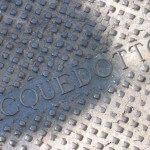
This gallery contains 6 photos.
In November of 2008, during the time of the last presidential election, work took me to southern France. Here’s a clip of my travel journal from my stay in very, very off-season St. Tropez:
And into gray windy skies I blew.
I arrived at Nice Cote de Azure Airport this morning at 8am this time after a sleepless night on a Delta flight. The food is only slightly more palatable on Delta than it is on American Airlines. Cleared Security in the elegant c. 1960s Delta terminal at JFK, but was basically vivisected by current cheap-out airline tactics and uber security screening.
The French customs officer questioned me not why I was visiting France, but “Obama ou McCain?” “Obama bien sur!” I replied. Others ahead of me had answered McCain. I told the officer to send them back to the Etats-Unis. I should have told him to keep them.
I was met by the man I thought to be M. M. I think had I spoken better French, this man still wouldn’t have had much to say. The extent of English for him was “Yes.” OK, so this is good for me. But he never once asked me a question, so that was that. I pried at him with all sorts of combien, habitez vous, and vous travaillez… type questions, in broken and bleeding francais. He dropped me at the Hotel Les Palmiers, a pleasant enough place from the mid 19th century. Le chambre ain’t much, but the bathroom is really nice. Like my last hotel in Paris. That and the walls are paper thin – I can hear every scratch from my neighbor moving in at this moment.
Hotel Les Palmiers has great coffee, and beautiful garden out front, and a folksy guy who tends desk. He tolerates my Americanishness, and smiles at me a lot. I am one of two women in St. Tropez who don’t live here who I saw walking alone today. Everyone else is clad with a rhinestone-laden jeans, boots, and fur jacket look from the 1980s.
Skinny streets gush with flowering vines, even on November 2. The sky and my face blended together in a steel gray pallor. My hair grew big and wild as the salted air ran its fingers through.
I cheered, exploring each street of pastel buildings, stacked with shuttered windows, remembering the French café life. I passed jewelry, clothes, housewares, butchers, fromageries, the fish market, and so on. The wind-urged salty waves smacking the quai was exciting. The boats lining the port were obscene with thumping music, grand names and locales, shining lights, and young men keeping the whole mess spotless.
It is not quite 5pm and I am letting myself fall asleep. I have never been so bad about letting jetlag take over. I cannot go to bed before 7pm. Maybe I’ll take a shower and get something from the grocery store. I wish my neighbor would stop slamming her door. I want to yell at her, how very New York. But once every 30 seconds is a bit much. Where do you find all those doors to slam in a rented room?
I headed up the hill to the fort, which was closed due to November, a contagious epidemic disease in this town. No museums are open, including the one I will work at tomorrow. I am left to skitter around the town with the dead leaves, and I’ve walked each street exactly three times. I am especially drawn to those niches into which the sea blows, directly up to the houses’ foundations. There was a car fair down at the wharf, mostly for vehicles for Ordonnez – kind of like off-roading, with more class (read: money). Money is in no short supply in this town. I pass basements of dwellings where families are sitting down to Sunday dinner.
Friends go drinking below my room, though the power has gone out in my hotel! That thunderstorm the wind promised all day long is finally here. The thunder coaxes sounds from the sky like I have never heard before. I have closed the shutters, but I’m so tempted to throw them open again to watch.
Due to a damned mosquete and les gens en chambre onze, je ne dors pas plus de trois heures hier soir. Or so I’ve repeated, as one of my more accomplished phrases today. I awoke to door slamming number 11 again at 9:30 and 10:30, and that was it. I was awake and hungry again until 2:30. I broke down and raided the mini bar for cacahuetes and a Heineken. It was the most valuable 7 Euros I had ever spent. I drifted finally into oblivion after plugging my ears with my Ipod to drown out the silence.
A poorly-framed picture fell off the wall around then, thud.
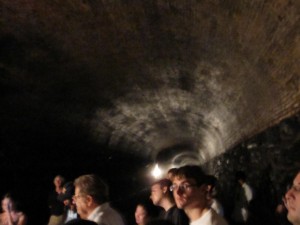
Group listening to Bob Diamond of BHRA in the tunnel under Atlantic Avenue, Brooklyn. RL Fifield, 2010.
Until December 2010, at the intersection by the Trader Joes on Atlantic Avenue in Brooklyn, you might find a few traffic cones surrounding a popped manhole cover. Dozens of people queued on the nearby sidewalk. Between green lights, a few people would cross the street to the area in the middle of the intersection, and one by one, slip below the asphalt on a household ladder sticking out of the manhole.
Huh?
We took part in one of the last tours by Bob Diamond, who rediscovered the subway tunnel in 1980. The tunnel is the oldest subway in the world: it was constructed using cut-and cover technology in 1844. Until the creation of the tunnel, trains, wagons, horses, and pedestrians all used the surface of Atlantic Avenue, all the way to the riverfront.

Tunnel entrance. Photo: BHRA.
The tunnel is almost completely black, except for a few lights strung along the side and flashlights carried by participants. It’s rough going over the floor of the tunnel; the tracks were removed before abandonment and the floor is rutted and pitted. Above is the beautifully vaulted brick ceiling is pierced by dark ovals, once used to let smoke escape the tunnel.
Bob Diamond is a figurehead of the BHRA: the Brooklyn Historic Railway Association. For the last 30 years, the BHRA has been attempting to reignite streetcar service in Brooklyn, especially in transportation-underserved Red Hook. I love the BHRA – they are an organization that respects the past, and looks toward the potential of rail for the future – all with a can-do grassroots spirit.

